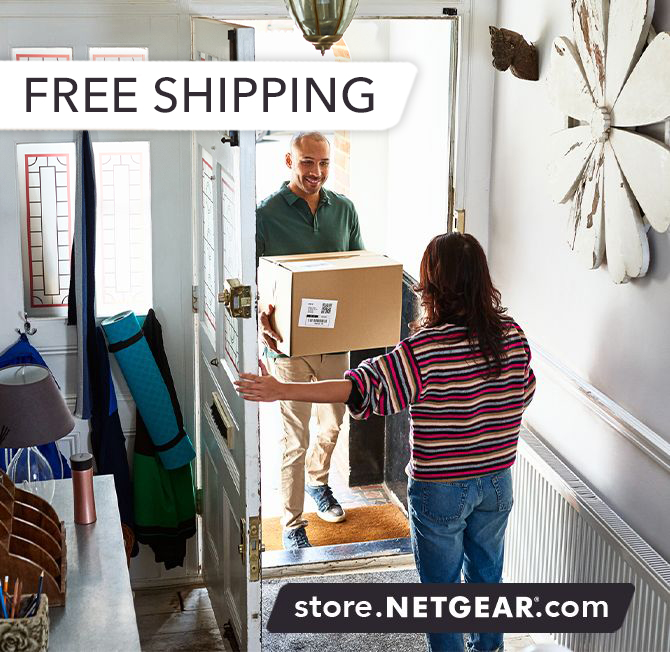
- Subscribe to RSS Feed
- Mark Topic as New
- Mark Topic as Read
- Float this Topic for Current User
- Bookmark
- Subscribe
- Printer Friendly Page
Can't Find Duo V1 on the Network after Upgrade to Windows 10
- Mark as New
- Bookmark
- Subscribe
- Subscribe to RSS Feed
- Permalink
- Report Inappropriate Content
Windows 10 upgrade (?) and now the ReadyNas Duo V1 has disappeared from the network, no instructions from Netgear that I can find to resolve the problem. I did see an "End of LIfe, no longer supported" message, which might explain things. If that's correct I'm more than a little annoyed that Netgear is unable to manage to have the device even be seen on the network so I can recover files. How hard can that be? To see the deivice on the network? End of Life? Because of a Microsoft OS update? Seriously? We tried to stay consistent with brands so this place is full of Netgear stuff. That was apparently a mistake. I've supported Netgear and now you tell me it's EOL so I'm just out of luck? Well, Netgear, if so then this is my EOL message to you; no more, no way. So is it correct? End of Life and no support, no method supplied, even suggested for transition?
I can find an old laptop still running an old verson of Windows to get the files, but Netgear... seriously?
Solved! Go to Solution.
Accepted Solutions
- Mark as New
- Bookmark
- Subscribe
- Subscribe to RSS Feed
- Permalink
- Report Inappropriate Content
That did it I have no idea WHAT in that list did it, because it pinged correctly, I installed Raidar 6.0 and it didn't seem to find anything different than the earlier version, and the //192.168.1.XX/ took me to the shares page, as before, but now hte NAS shows up in file explorer and my different devices can see and access it. So solved, thank you. I don't imagine I have to understand it, right? As long as it works?
Thanks again.
All Replies
- Mark as New
- Bookmark
- Subscribe
- Subscribe to RSS Feed
- Permalink
- Report Inappropriate Content
Re: Can't Find Duo V1 on the Network after Upgrade to Windows 10
Hi pillick,
I have some suggestions that may help us detect and access the ReadyNAS in your network. Try the following:
1. Since you can detect and see it in your older PC, try to ping the IP address of your ReadyNAS using CMD or command prompt.
2. Install RAIDar 6.0 in your Windows 10 PC and scan your ReadyNAS device.
3. If you can ping and the RAIDar sees your ReadyNAS, try to access it using \\NAS-IP ADDRESS\ the search box in your task bar or through Windows File Explorer.
Hope this helps!
Kind regards,
BrianL
NETGEAR Community Team
- Mark as New
- Bookmark
- Subscribe
- Subscribe to RSS Feed
- Permalink
- Report Inappropriate Content
Re: Can't Find Duo V1 on the Network after Upgrade to Windows 10
FWIW I am able to access the Duo v1 from my two Windows 10 PCs.
What firmware is running on the duo?
- Mark as New
- Bookmark
- Subscribe
- Subscribe to RSS Feed
- Permalink
- Report Inappropriate Content
That did it I have no idea WHAT in that list did it, because it pinged correctly, I installed Raidar 6.0 and it didn't seem to find anything different than the earlier version, and the //192.168.1.XX/ took me to the shares page, as before, but now hte NAS shows up in file explorer and my different devices can see and access it. So solved, thank you. I don't imagine I have to understand it, right? As long as it works?
Thanks again.
- Mark as New
- Bookmark
- Subscribe
- Subscribe to RSS Feed
- Permalink
- Report Inappropriate Content
Re: Can't Find Duo V1 on the Network after Upgrade to Windows 10
For accessing network shares you would go to \\192.168.1.XX
For network shares slashes go the opposite way to the way they go for a URL. http://192.168.1.XX would redirect to the shares page by default.
- Mark as New
- Bookmark
- Subscribe
- Subscribe to RSS Feed
- Permalink
- Report Inappropriate Content
Re: Can't Find Duo V1 on the Network after Upgrade to Windows 10
Hi pillick,
You're welcome! As long as it shows up in your network, can ping and access the files, you're all set.
Let me know if you have further questions.
Kind regards,
BrianL
NETGEAR Community Team
